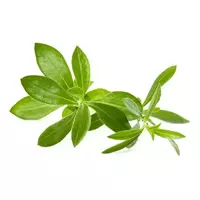Chaber

Chareb is an annual herbaceous plant in the family Yasnotkovye. Due to the presence of a surprisingly spicy aroma and a mass of beneficial properties, chaber is widely used not only in cooking as a seasoning for various dishes, but also as an effective medicine in medicine.
Erect with a branched stem, the plant reaches a height of about half a meter. Chaber blooms from July to August, while the flowers of the plant, which can be white, pink, light purple or purple with purple spots, by the beginning of autumn degenerate into light brown fruits, resembling nuts in appearance.
By the way, chaber, which is also known as pepper grass, comes from the eastern coast of the Mediterranean. Only in the 9th century, thanks to the monks, the plant fell into the territory of the countries of Central Europe, while due to the low cost, unlike pepper, cloves and ginger, it quickly gained wide popularity.
Thyme is distinguished by an exquisite bitter taste and a spicy aroma that resembles the smell of pepper. For culinary purposes, it is customary to use the leaves of this aromatic plant, which are removed from the very top of it, because it is they who have the most subtle and refined spicy aroma.
When dried, this grass is very often added to dishes based on beans, mushrooms and fish. In addition, chaber can be used in the preparation of beefsteaks, cutlets, poultry dishes, pickled vegetables, veal and rabbit meat. Fresh leaves of thyme perfectly shade and saturate the taste and aroma of salads and soups, and are also used in salting mushrooms or vegetables.
True, in order to preserve the characteristic taste and aroma, it is recommended to add chaber to hot dishes no more than a couple of minutes before cooking is ready. In addition, it is important not to overdo it with this aromatic grass when using thyme, otherwise it will simply "drown out" the aroma of the entire dish.
The benefits of chabra
In traditional medicine, the beneficial properties of thyme are highly appreciated and find their application in the treatment of gastrointestinal diseases, as well as for arousing appetite and improving digestion. In addition, the benefit of thyme lies in its ability to act as an effective natural antimicrobial, anti-inflammatory, as well as insecticidal agent. This plant is often included in homeopathic herbal collections.
To date, a number of countries (for example, France and Germany) have recognized chaber as an official medicinal plant. By the way, according to recent studies, chaber has a strong antioxidant effect, which allows it to be used as a preventive agent against cancer and aging.
cup 272 kCal
Energy value of chab (Ratio of proteins, fats, carbohydrates - ju):
Proteins: 6.73 g (~ 27 kCal)
Fats: 5.91 g (~ 53 kCal)
Carbohydrates: 23.03 g (~ 92 kCal)
Energy ratio (bj | y): 10% | 20% | 34%
 Español
Español Français
Français Português
Português Русский
Русский 简体中文
简体中文 繁體中文
繁體中文 日本語
日本語 한국어
한국어 العربية
العربية Türkçe
Türkçe Қазақ
Қазақ Deutsch
Deutsch Italiano
Italiano Українська
Українська
